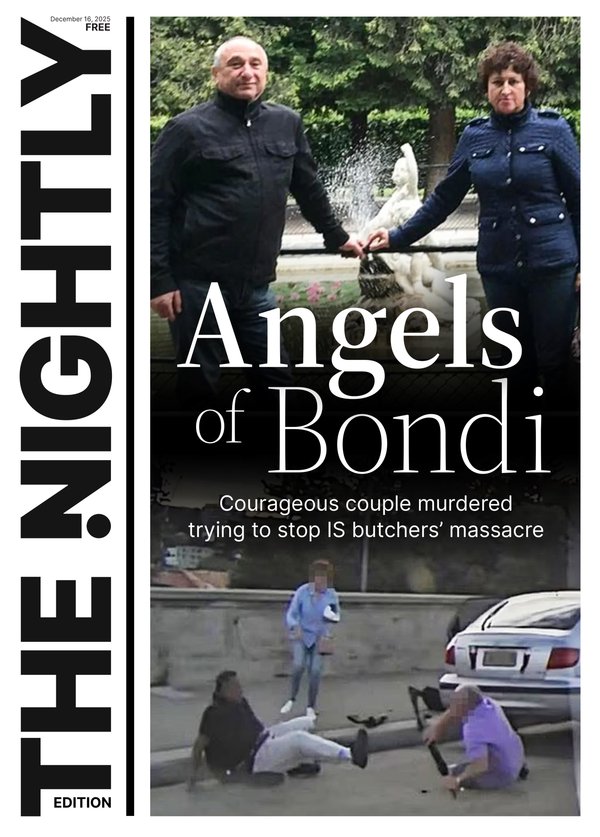A global farewell begins in Vatican City—but what happens after the final prayer?
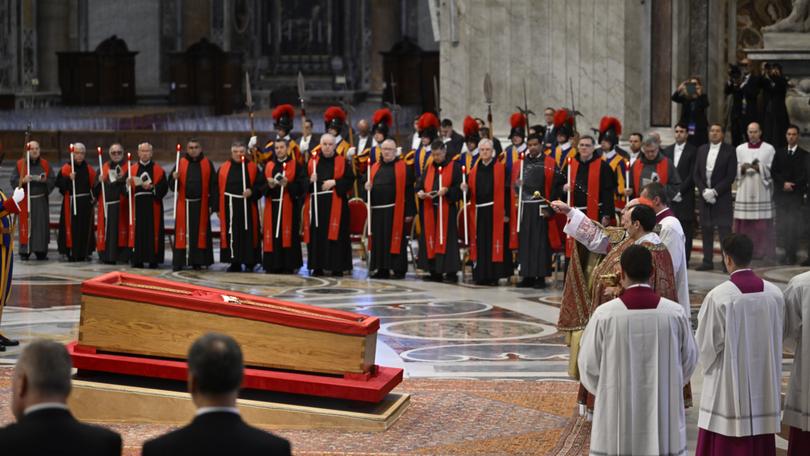
Pope Francis’s death initiates carefully choreographed proceedings that will conclude with the election of a new pontiff. Francis’s funeral will be held at St Peter’s Square in Vatican City at 10am local time on Saturday. Tens of thousands of mourners, including President Donald Trump, are expected to attend.
Here’s what to know:
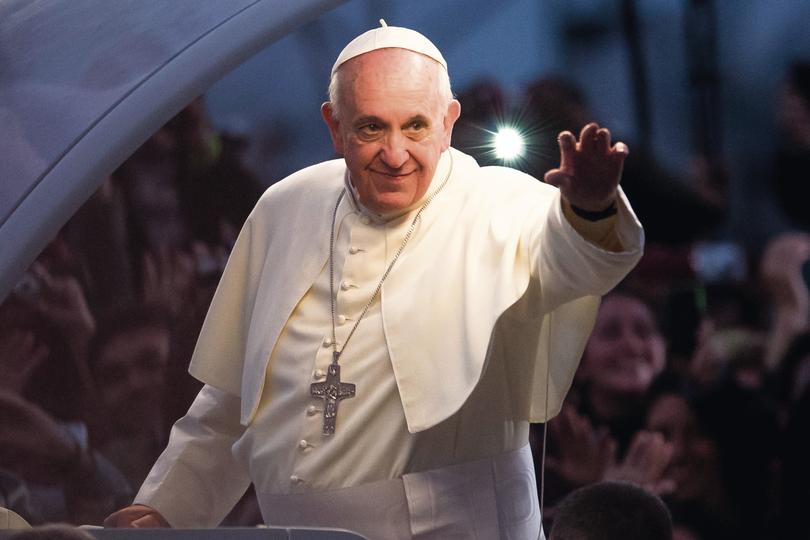
Sign up to The Nightly's newsletters.
Get the first look at the digital newspaper, curated daily stories and breaking headlines delivered to your inbox.
By continuing you agree to our Terms and Privacy Policy.When is Francis’s funeral?
A Pope’s funeral usually occurs four to six days after his death. Francis died Monday, and his funeral will be held Saturday, the Vatican announced Tuesday.
The funeral of Pope Emeritus Benedict XVI occurred five days after his death, while the funeral of Pope John Paul II happened six days afterwards.
One exception was the funeral of Pope Pius VI, who was pontiff from 1775 to 1799. He died in captivity in Valence, France, after being kidnapped by Napoleon Bonaparte, and he was buried in the local cemetery. Although funerals were held immediately after his death in places not under French control, a more formal funeral was not held until 1802, when his remains were returned to the Vatican.
Where will Francis’s funeral be held?
The Vatican announced that Francis’s funeral, as with those of previous Popes, will be held in the parvis of St Peter’s Basilica, or the open space in front of the basilica surrounded by its colonnades, designed by Gian Lorenzo Bernini.
How does the funeral unfold?
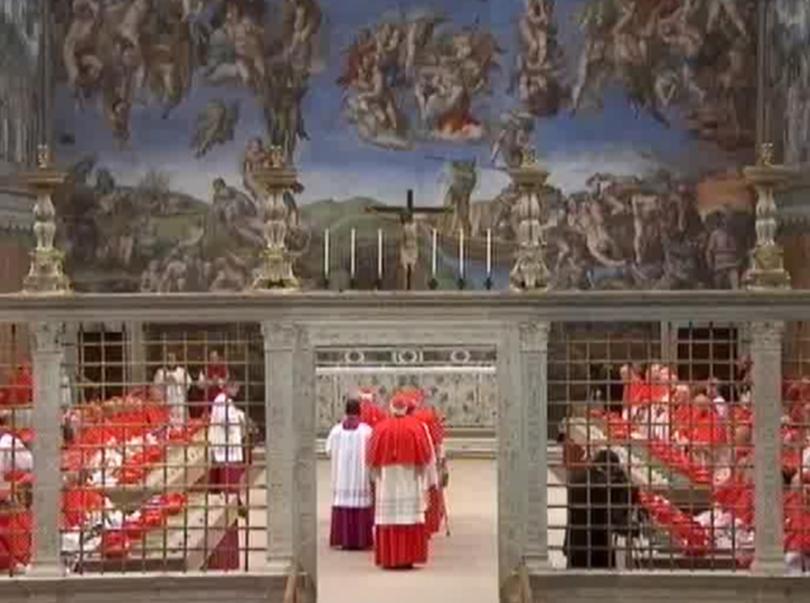
On Wednesday at 9am local time, the Pope’s coffin was taken from the chapel of Casa Santa Marta, where Francis lived, to St Peter’s. After a moment of prayer by Cardinal Kevin Joseph Farrell, the Vatican camerlengo, or chamberlain, the “transfer” of the body in a procession to St Peter’s will begin.
The procession passed through the Vatican’s Santa Marta and the First Roman Martyrs squares. From the Arch of the Bells, it exited into St Peter’s Square and entered the basilica through the central door.
At the altar of the confession, Farrell will preside over the Liturgy of the Word, at the end of which the viewings of the pontiff’s body will begin.
Francis’s body will be placed in an open coffin. He will be dressed in his ceremonial red liturgical vestments, including the miter headdress that symbolises his position as the bishop of Rome, said Rebecca Rist, a papacy expert and professor of medieval studies at the University of Reading in Britain. Previous Popes had three coffins prepared for them - one of cypress, one of lead and one of oak. This was meant to deter anyone from tampering with the body after burial, a tradition that continued into the modern era, deepening the mystique of the papacy, Ms Rist said.
Among other changes that Francis made a year before his death, the tradition of preparing three coffins was eliminated to simplify proceedings.
After the viewing, the public Mass will commence on Saturday, to be presided over by the dean of the College of Cardinals, a title held by Cardinal Giovanni Battista Re of Italy.
The funeral Mass will be co-celebrated by ceremonially dressed senior clerics. After Communion, ceremonial final praise and a farewell will be offered to the Pope, before his body is taken to the St Mary Major Basilica in Rome for burial. Francis will be the first Pope in more than a hundred years to be buried outside the Vatican walls.
Francis stopped to pray at St Mary Major each time before he travelled abroad as Pope, and upon his return to Rome. His last visit there was in late March, after he was discharged from the hospital.
The Pope will be buried in a simple underground tomb, beside the basilica’s Pauline Chapel, prepared “without particular ornamentation” and marked only as “Franciscus,” according to his wishes. Francis stated in his will that expenses for “the preparation” of his burial at St Mary Major will be covered by an anonymous benefactor arranged by Francis, rather than the church. The Vatican has declined to name the benefactor.
Despite the changes, the funeral is still expected to be a solemn, well-attended ceremony, rich with the pomp and grandeur associated with the papacy, Ms Rist said.
Who will attend the funeral?
At least tens of thousands are expected to show up, including Catholic mourners, cardinals and world leaders. About 50,000 people attended Benedict’s funeral in 2023, while about 300,000 came to the funeral of John Paul II in 2005.
Among the attendees are expected to be 135 cardinal electors - cardinals under the age of 80 who will pick a new Pope.
Mr Trump and First Lady Melania Trump will attend, the President said in a post on his social media platform, Truth Social.
Ukrainian President Volodymyr Zelensky and his wife, Olena Zelenska, are planning to attend, a spokesman for Mr Zelensky told Interfax on Tuesday. European Commission President Ursula von der Leyen and European Council President António Costa will also be at the funeral, according to their offices.
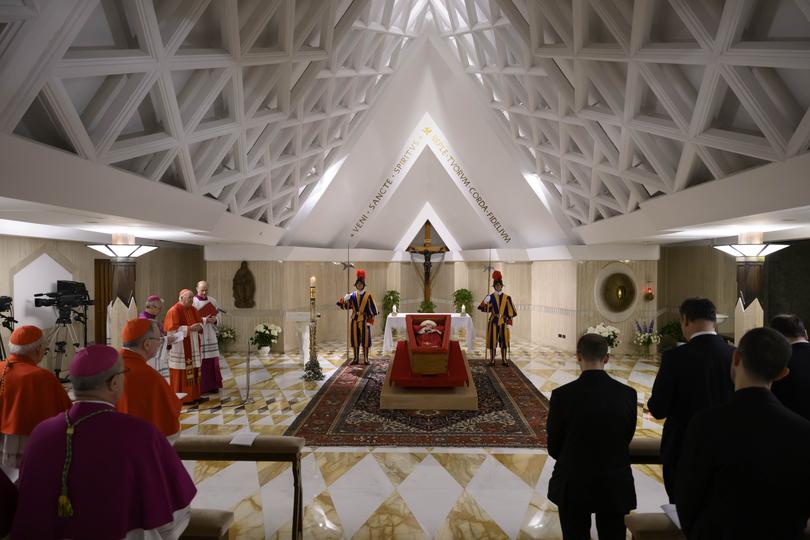
What’s next in the process of choosing a new Pope?
At some point from 15 to 20 days after the death of a Pope, cardinal electors start casting ballots at the Sistine Chapel to select a new pontiff. The electors submit secret ballots. Four rounds of ballots are taken daily until a papal candidate secures at least two-thirds of the votes. The cardinals are not allowed to interact with the outside world until a new pontiff is determined.
Three designated cardinals count aloud and record each ballot. If the votes fail to determine a new Pope, the ballots are burned in a stove with a mixture of chemicals to produce black smoke that people outdoors can see. Once a new Pope is chosen, white smoke billows from the chapel.
The dean of the College of Cardinals then announces from the chapel’s balcony that a new Pope has been selected.
It took five rounds of ballots cast over two days to elect Francis in 2013, while cardinals needed four rounds over two days to select Benedict in 2005. The last time cardinals needed more than two days to elect a Pope was in 1958, when they cast 11 rounds of ballots to pick Pope John XXIII.
Jeong reported from Seoul and Ho from London. Susannah George in Rome contributed to this report.
© 2025 , The Washington Post
